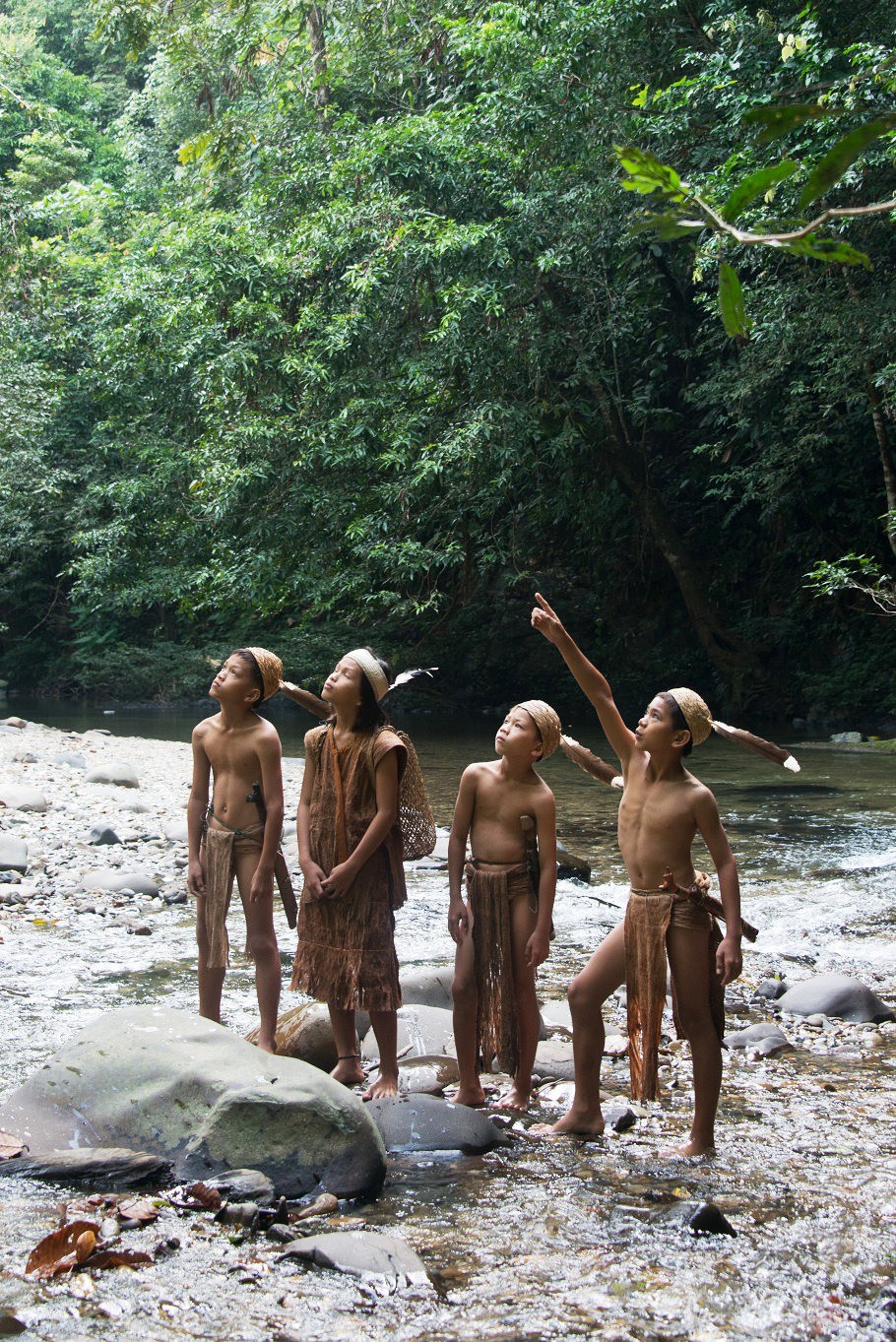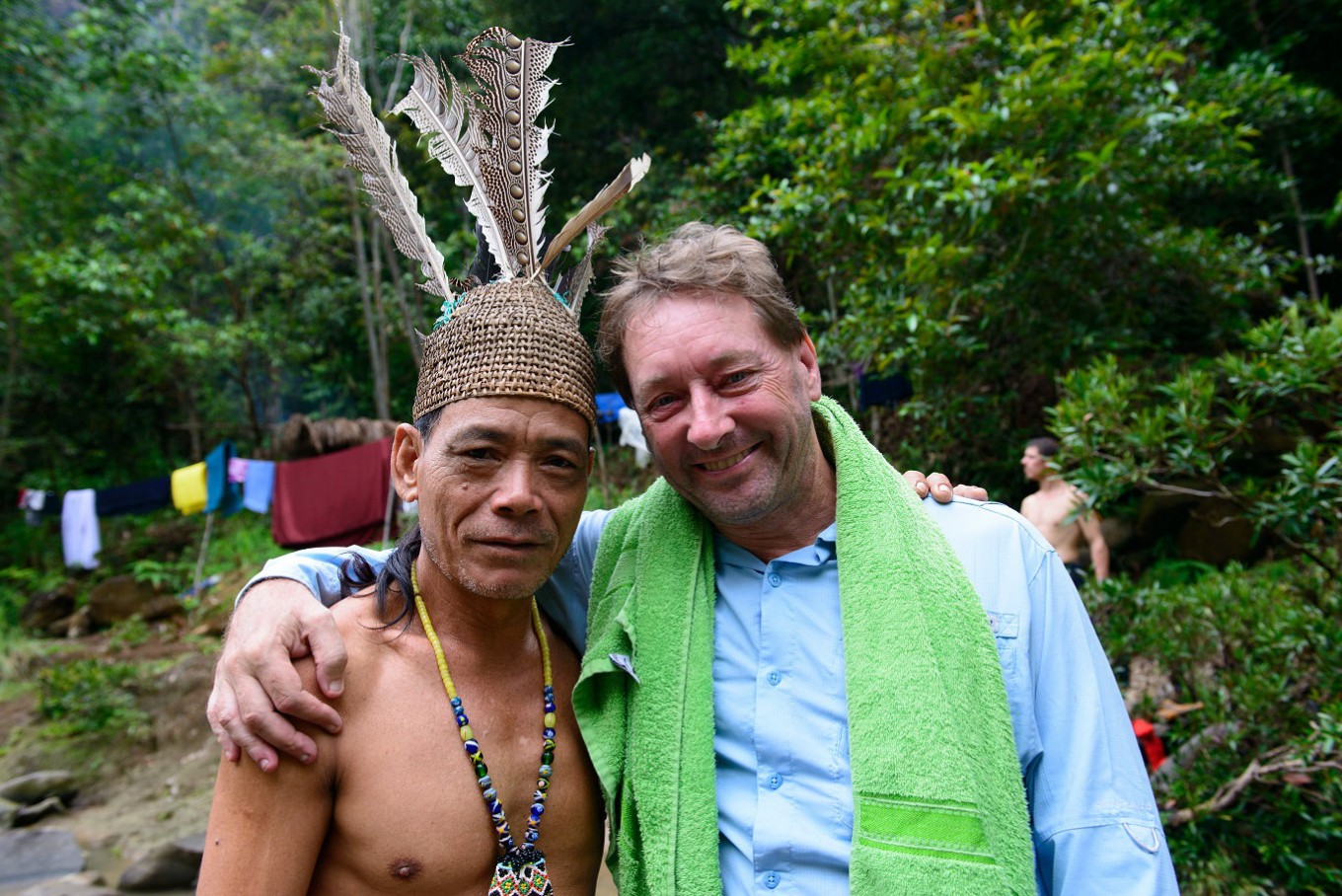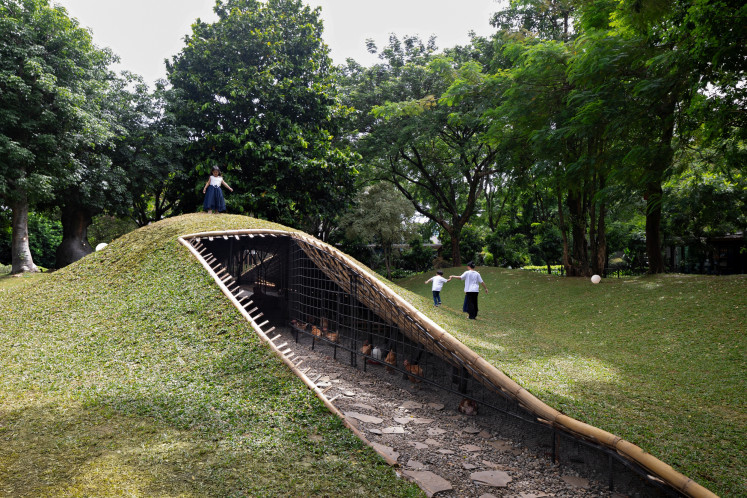Popular Reads
Top Results
Can't find what you're looking for?
View all search resultsPopular Reads
Top Results
Can't find what you're looking for?
View all search results'Journey to Long Saan' chronicles Dayak man's returning to ancestral land
Journey to Long Saan shrewdly uses footage from the 1930s and 1950s to contrast the Dayak’s halcyon past with footage of their grim realities of the present.
Change text size
Gift Premium Articles
to Anyone
T
he longboat made its way upriver to the pristine forests of North Kalimantan. An air of anticipation filled the vessel’s passengers as it bucked the river’s rapids, not least among them a Dayak elder for whom the trip is a long-awaited homecoming to his ancestral home, the long-abandoned village of Long Saan.
“I was drawn back [to Long Saan] because it is my ancestral land. All my ancestors, including my mother, is also buried there,” says Philius, a man from Kenyah Dayak tribe who lost his mother at the age of nine. “The land reminds me of my roots and calls me back, even though I left in 1970.”
The 67-year-old expresses his longing for the land through traditional songs, which he shares with members of the multinational expedition member who joined his homecoming. Among them are Native American artist Kevin Locke, who accompanies Philius’ melodies on a traditional flute. The instrument’s haunting melody reflect the common ground shared by their indigenous cultures.
The scenes are part of the documentary Journey to Long Saan, which chronicles Philius’ return to Long Saan from his current village Setulang. Produced by photographer David Metcalf and directed by Indonesian filmmaker Erick Est, the film is a three-year labor of love that explores themes related to Philius’ homecoming.
“[Journey to Long Saan] explores the relations of indigenous people to their land,” said the New Zealand born Metcalf at the film’s recent premiere at the @america United States cultural center in Pacific Place mall, South Jakarta.
“After all, they are custodians of their land. They know how to look after it in a sustainable manner because of their ties and understanding of the land.”
Read also: Samabue traditional school to preserve local culture
Est agreed: “[Journey to Long Saan] had no script, and it was done naturally. So, we incorporated a backstory about Philius’ childhood in Long Saan.
Est got on board the film at the suggestion of musician and expedition member I Gede Roby, whose work with the band Navicula incorporates indigenous music.
The young cast’s naturalistic, unaffected acting made impressions. These include parts like Philius dealing with his mother’s death and the loss of his friends as they moved from Long Saan to Setulang and other villages.
 Dayak children reenact the roles of Philius and his friends.(David Metcalf/File)
Dayak children reenact the roles of Philius and his friends.(David Metcalf/File)
“The villagers moved from Long Saan to villages like Setulang, Pimpim and Long Lebo as they are more accessible to supplies, while Long Saan is too far inland,” Est said. “For instance, getting salt and other foodstuffs to Long Saan from bigger towns can take two to four months, while in the latter villages it does not take that long.”
Journey to Long Saan shrewdly uses footage from the 1930s and 1950s to contrast the Dayak’s halcyon past with footage of their grim realities of the present. These include deforestation and the burning of peatland as part of slash-and-burn techniques to make way for palm oil plantations.
Yet, Philius and his fellow tribesmen continue the seemingly uphill task of conserving the thousands of acres of forest around his current village of Setulang as well as Long Saan as tanah olen, or sacred land.
Read also: Lok Baintan floating market leads revival of river tourism
“Journey to Long Saan can resonate with Indonesians, especially those who live in an Indonesian melting pot like Jakarta, due to its theme of being uprooted from one’s origins. The polemic with modernization and losing our way in the modern world is also highlighted,” said Metcalf.
“Many problems in the world today, such as religious intolerance and its fallout on [former Jakarta governor] Basuki Tjahaja Purnama, are examples of what happens if we get uprooted and lose our way.”
Metcalf also used Journey to Long Saan to highlight the plight of tribal lands in Kalimantan and around the world, a point driven home with performances by Locke and fellow Native American artists Doug Good Feather and Marcie “Happy” Frejo before the documentary.
“[Native Americans’] face similar problems with the environment and land rights as the Dayak. This is shown [in protests over the building of pipelines on the Lakota’s tribal lands] in Standing Rock,” said Metcalf, who plans to screen the film in indigenous or environmental film festivals.
“But the film shows how Kalimantan [has been] exploited for its natural resources for over the past 50 years. So much so, that those responsible tend to forget that various peoples and cultures do live there; this makes it all the more imperative for humanity to find ways to live with the planet instead of destroying it." (kes)
***
A media practitioner for over 10 years in both TV and print. Tunggul Wirajuda found a niche in the latter, particularly as a features writer. He often writes about visual or performing arts, but just is at home in writing about automotive, culinary and film, among other things. He can be contacted at twirajuda@gmail.com.
---------------
Interested in writing for thejakartapost.com? We are looking for information and opinions from experts in a variety of fields or others with appropriate writing skills. The content must be original on the following topics: lifestyle ( beauty, fashion, food ), entertainment, science & technology, health, parenting, social media, and sports. Send your piece to community@jakpost.com. Click here for more information.











